The Shotel Sword: The History of the Ancient African Weapon
There are many unknown tools and weapons that were used long before modern technology made them unnecessary. One of these includes the ancient African weapon known as the shotel sword. These traditional African weapons have a long history that is significant in Africa’s history, often showing the pinnacle of ancient technology and how the community displayed wealth and status.
While the shotel sword is not as well-known as some others, the blade has a rich and fascinating history, as well as use. Let’s get into it.
What Is the Shotel Sword?
The shotel (pronounced “sho-tol”) is a curved, sickle-shaped sword that originated around 980 BC in what is now known as northern Ethiopia. According to Ancient Origins, the shotel weapon was used as recently as the 19th century.
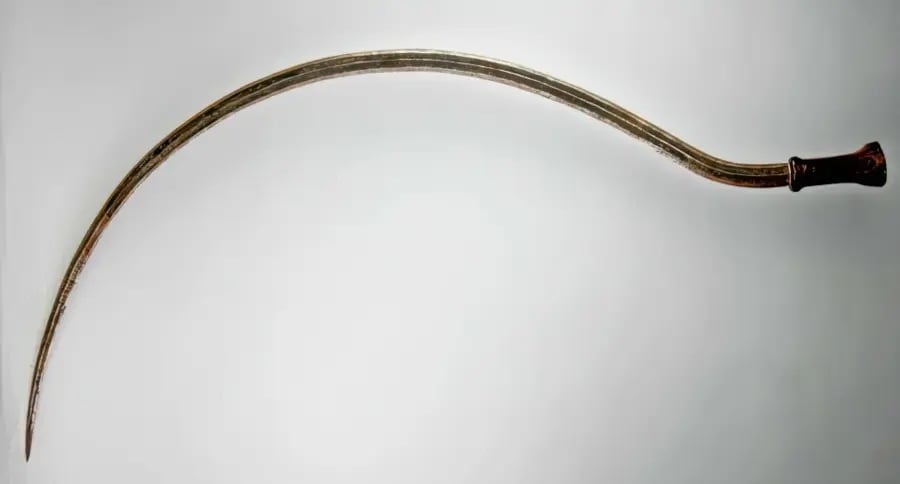
Source: The British Museum
The shotels are believed to be used in the Dʿmt, sometimes referred to as the Diʿamat Kingdom, which existed between the 10th and 5th centuries BC. There is very little known about this kingdom beyond the shotel and some of the rulers.
The History of the Shotel Sword
The Khopesh sword was common in both ancient Mesopotamian and Egyptian civilizations. The sword was passed down through the influence of ancient Nubia to modern-day Ethiopia.
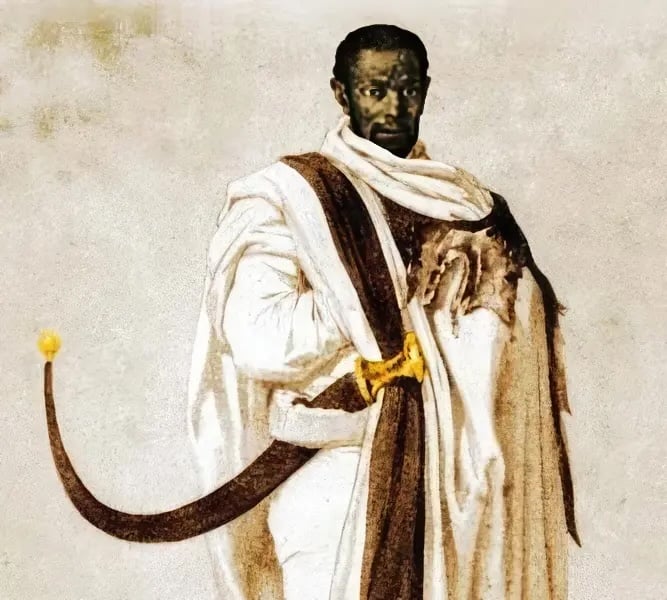
Source: Ancient Origins
One theory popularized by Swordish is that the shotel was a result of the constant nomadic tribal interaction along the Ethiopia Harar trade route along the Red Sea. This theory points out the Congolese throwing knife and the short sword Gile as the influences for the shotel. They share many common traits, such as the midrib of the blade, curve, and handle.
What Makes the Shotel Unique?
The shotel sword is one of the several swords with curved blades. However, the sword’s curve is particularly striking and has a fearsome image that looks like it could inflict major damage. That might be why the shotel is barely decorated.
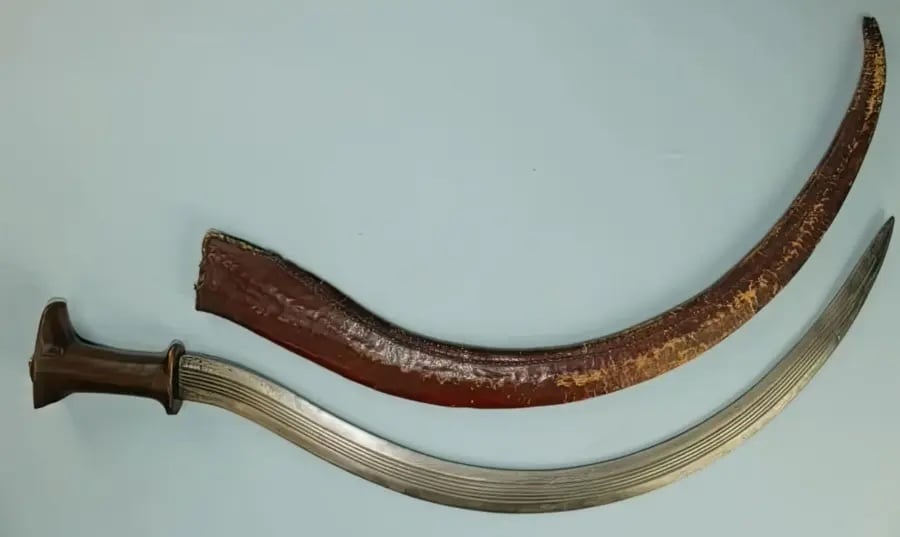
Source: Scholagladiatoria
The shotel’s shape is almost semicircular, running 40 inches (1 meter) in length. The double-edged sword makes the weapon especially deadly. The bare handles of surviving shotels are constructed of either wood or rhino horn.
Curved Swords in History
Swords with curved blades have been discovered in several cultures and civilizations that date back thousands of years. The development of curved-blade swords over time has captured the past and cultural importance of the communities that used them.
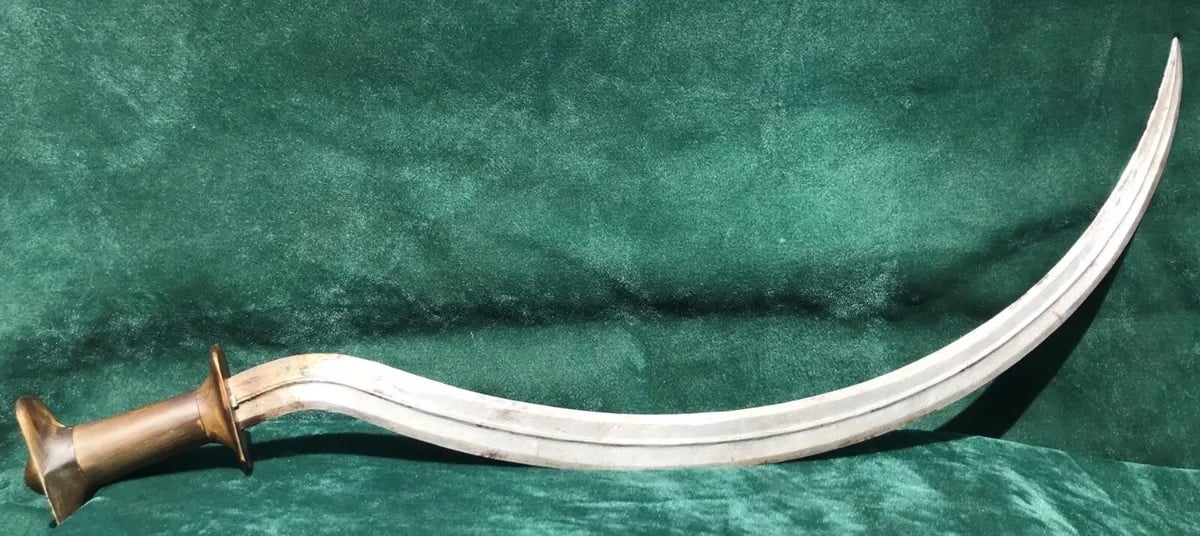
Source: eBay
From well-known examples like the katana to the most pronounced curves like the shamshir, these curved blades often resemble sickles.
The Persian Shamshir vs. Shotel
The Persian shamshir shares many similarities with the shotel, but there is one aspect that makes them different. The curved “scimitar” sword is a slim blade that is not tapered until the very tip. The major difference between the shamshir and the shotel is that the shotel is almost a semicircular shape and has a flat, double-edged blade with diamond cross-sections.
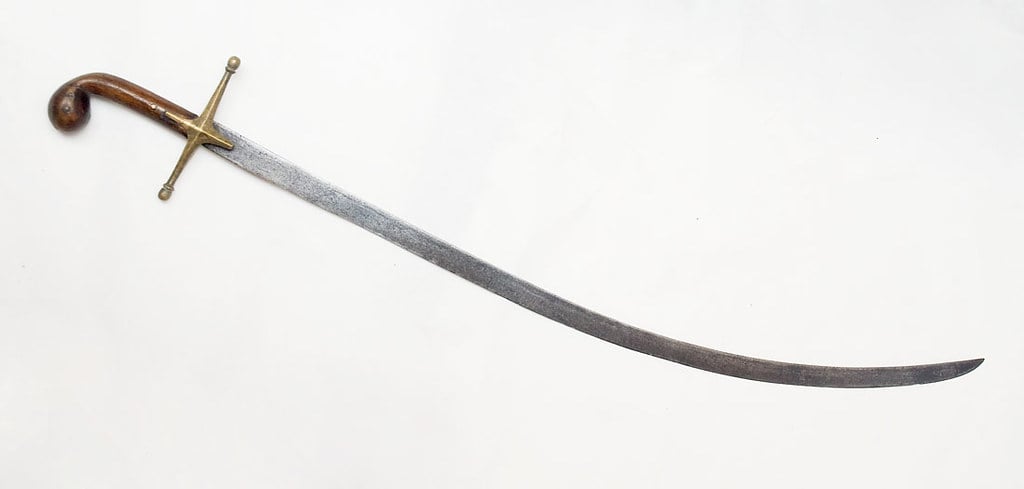
Source: Adam Rose/Flickr
Another notable difference is that the shamshir is typically decorated, usually with hunting scenes, while the shotel is often simple and not decorated.
The Difference Between a Khopesh and a Shotel
The khopesh is another ancient sickle-shaped sword that was developed from battle axes. The Egyptian sword is curved with the intention of trapping an opponent’s arm or pulling a shield out of the way. The blade is only sharpened on the outside portion of the curved end.
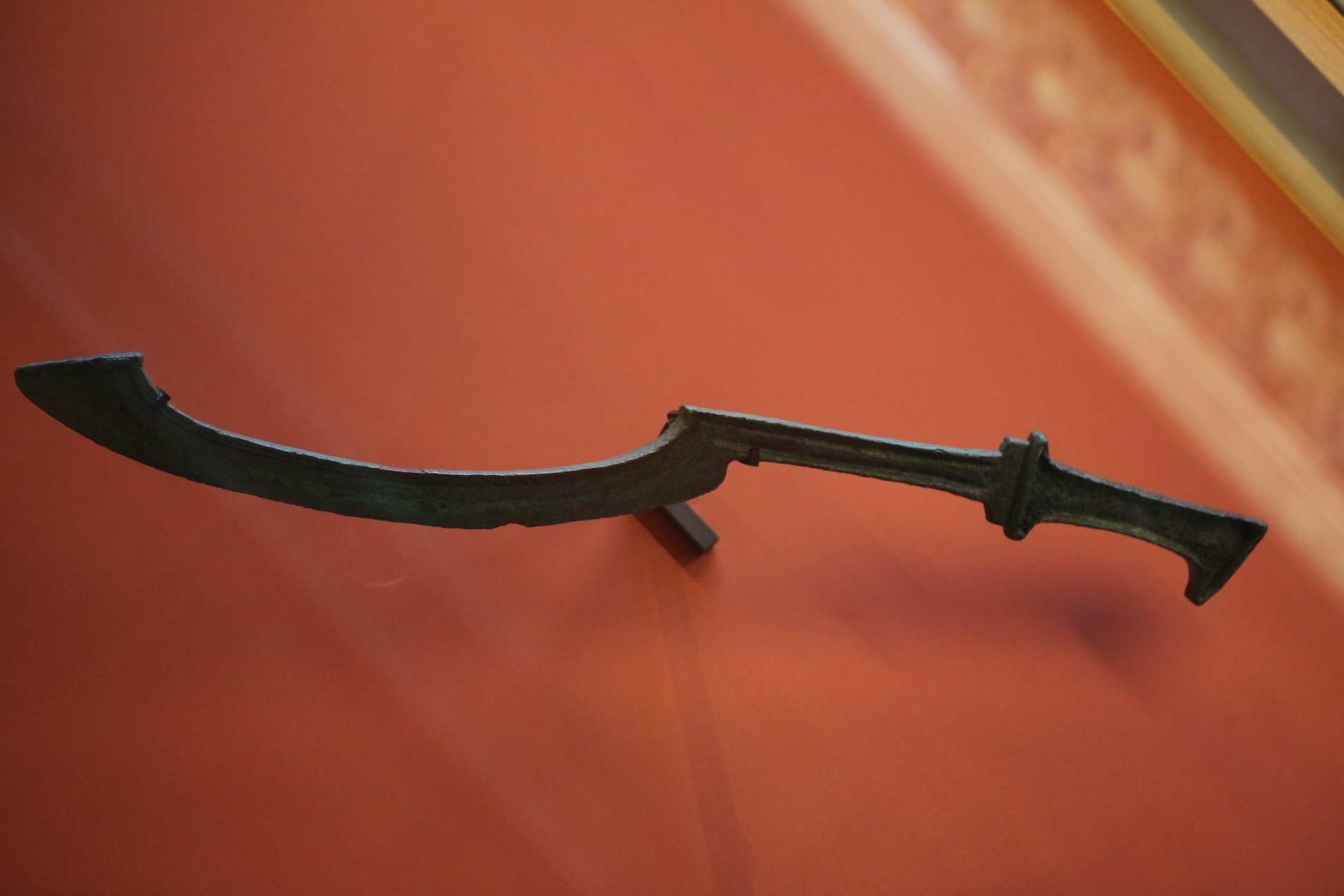
Source: Wikimedia Commons
The khopesh is smaller than the shotel by about 20 inches. The khopesh is almost ax-like, while the shell is more curved and is used to poke around shields rather than rip them away from the enemy.
Is the Shotel a Sickle?
A sickle, which is a single-handed agricultural tool designed to harvest and reap grain crops, has been around since the Iron Age. The signature curved blade of the inside edge of these sickles is what made them perfect for the job.
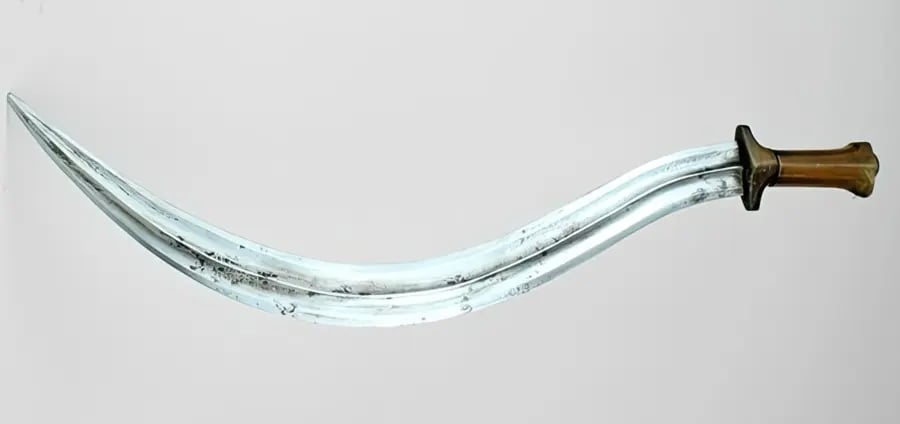
Source: Oriental Arms
The shotel, however, is not a sickle. The sword is double-edged and large, making it almost impossible to block.
How Was the Shotel Used?
The shotel was used to reach behind the shields of opponents, causing some damage to the vital areas of the enemies. Another method includes swinging the sword down toward the enemy’s head.
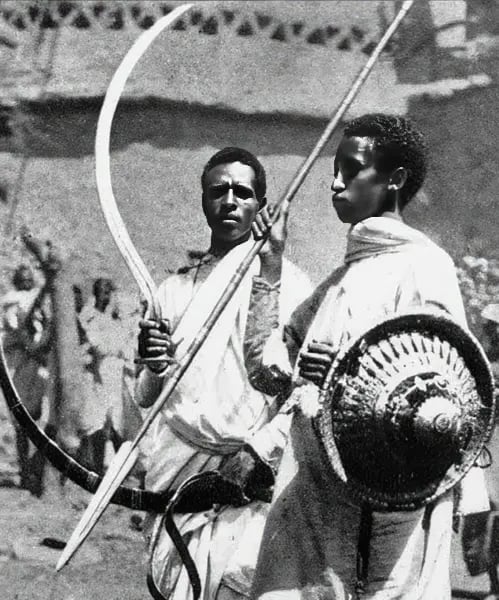
Credit: Xoxo Eritreia
Unfortunately, the design of the shotel makes the sword hard to wield. The hilt of the shotel is too small in proportion with the large curved blade. This makes it difficult to remove the sickle-like blade from the scabbard or even aim.
Who Used the Shotel?
The African shotel was believed to be used by the Dʿmt civilization. The earliest evidence shows that the sword was wielded by horse-mounted and foot soldiers, with some specialized shotel warriors earning the name “meshenitai.”
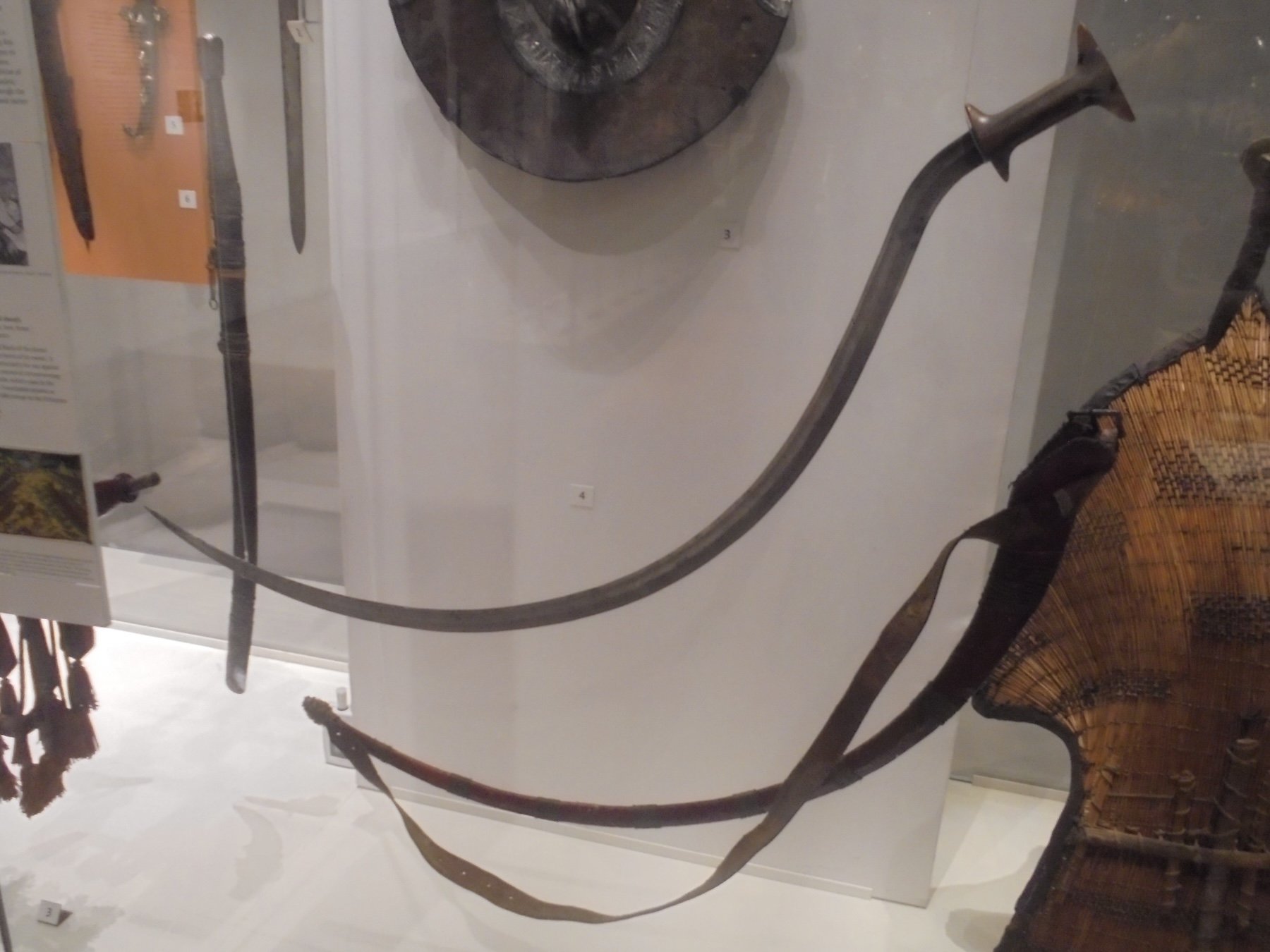
Source: Wikimedia Commons
Under the rule of Amda Seyon I of the Solomonic dynasty, the Ethiopian empire conquered vast amounts of territory and helped spread Christianity throughout the region. The elite Axurarat Shotelai warriors in Amda Seyon I’s forces played an important role in the military successes of his reign.
Other Traditional African Weapons Used in Warefare
Africans were known for crafting unique weaponry before the colonial era. These weapons were used for various activities like war, grazing, traditional ceremonies, and more. Ethiopians preferred swords like the Kaskara and Gudare in large-scale warfare formations over the shotel.

Source: Wikimedia Commons
The shotel was used in many duels over wars. This spectacular fighting showcased the warriors’ speed and agility. The shotel was also effective at dismounting cavalry riders and inflicting large wounds on unarmored opponents.
The Jile
However, if we want to solely focus on the ancient weapons of Ethiopia, then we must mention the jile. Also known as the “gile” in Afar language and “qolxad” in Somali, the dagger with a long curved blade became famous among the daggers that came from the Horn of Africa.
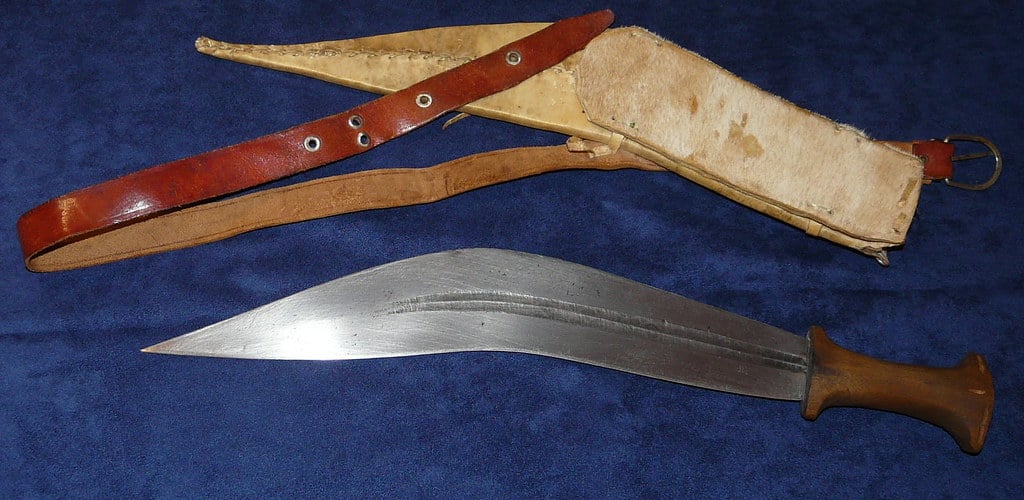
Source: Hákon Sigurðarson/Flickr
The national symbol of the republic, the Jile-Qolxad is a double-edged sword with an asymmetrical leaf shape. The weapon had two purposes: self-defense and an adornment that became a symbol of virility among nomadic warriors.
The Jambiya
The jambiya become a notable weapon as well for its similarities to the shotel. While the jambiya originated from Saudi Arabia, the dagger with a short curved blade became popular in parts of South Asia and Southeast Asia.
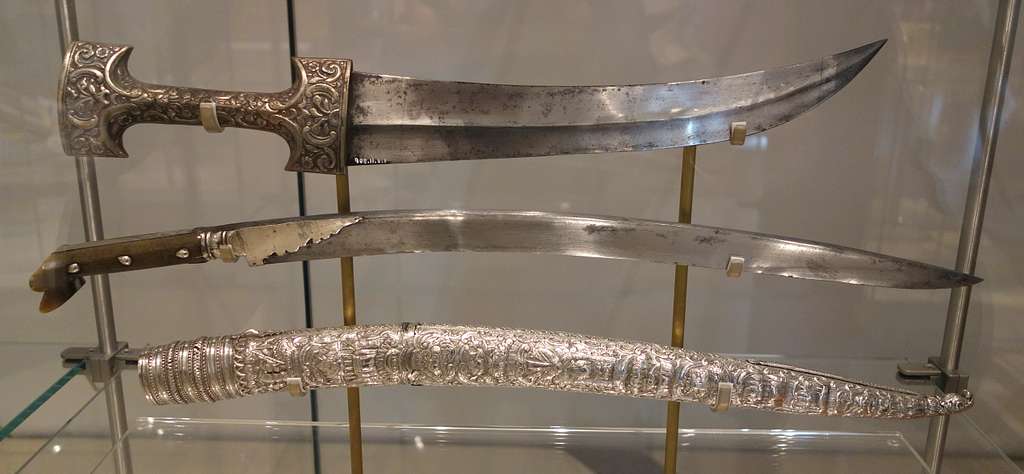
Source: Royal Ontario Museum, Toronto/Picryl
Only used in extreme cases, the jambiya is worn as an accessory that showcases the ivory handles. These highly decorated handles are worn as a sign of high social status. The ivory handles would turn yellow and be called “saifani heart.” If they turned greenish yellow, they were called “asadi.”
